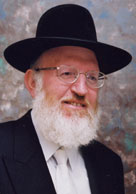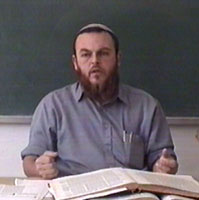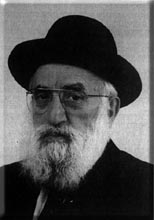Beit Midrash
- Sections
- Peninei Halakha
- Shabbat and Holidays
- Sefirat Haomer
- The Laws of Sefirat Ha'omer
The prevalent custom among Ashkenazim in Israel today amalgamates several traditions. Most customs of mourning last until Lag Ba-omer, while some continue afterward. This is based on the tradition that although the plague ended on Lag Ba-omer, students who fell ill before then died between the 34th day of the omer and Shavu’ot (Maharal, Ĥidushei Aggadot, Yevamot 62b). Therefore, Ashkenazim do not cut their hair, get married, play music, or dance until Lag Ba-omer. Afterward, however, they refrain only from weddings and large celebrations. Another reason for this custom is that during the Crusades and the Khmelnytsky Massacres of 1648-1649, tens of thousands of Ashkenazic Jews were killed. Since these murders occurred mainly during the latter part of the omer period, Ashkenazic communities refrain from large celebrations during this period. From Rosh Ĥodesh Sivan, however, it is customary to permit weddings, because the joy of Shavu’ot, which we already begin to experience from the beginning of the month, cancels the mourning. Some rule leniently and allow one to get married from Lag Ba-omer and on, and to avoid only optional large celebrations until Shavu’ot. (In the note below, we will mention another custom that was very widespread in Germany.)[4]
On the day of Lag Ba-omer itself, it is permissible to get married and take a haircut. There is a dispute, however, regarding the night: some say that weddings and haircuts are permitted at night as well, because the entirety of Lag Ba-omer is joyous. Others maintain that one is required to observe 33 consecutive days of mourning, so it is permissible to get married and get a haircut only after morning has arrived and we can apply the rule: "Part of a day is considered like a whole day." It is customary to act stringently le-khatĥila, but one may follow those who rule leniently if necessary. According to all customs, it is permissible to celebrate with music and dancing on the night of Lag Ba-omer.[5]
[4] The Ashkenazic custom in Israel regarding weddings is explained in Minhagei Eretz Yisrael 18:2. Siddur Pesaĥ Ke-hilkhato 12:3 states likewise. This custom satisfies all the various traditions. First of all, 33 days of mourning are observed at the beginning of the omer period, which satisfies the tradition that Rema quotes from Tosafot. It also fits with the tradition that the plague ceased on Lag Ba-omer. In addition, we can explain that the textual variant that states that R. Akiva’s students died until pros ha-Atzeret means approximately half a month before Shavu’ot. Furthermore, following this practice means that there is no great difference between the Ashkenazic and Sephardic customs. Nonetheless, we still continue to avoid large celebrations even after Lag Ba-omer, in accordance with the tradition that R. Akiva’s students who fell ill before the 33rd died throughout the remainder of the omer period. Furthermore, Taz 493:2 states that we observe these customs because of the tragedies that occurred after Lag Ba-omer. Another explanation for this custom is that it fits with our version of the Gemara (Yevamot 62b), which states that the students died between Pesaĥ and Shavu’ot. And since refraining from getting married is the only expression of mourning mentioned in the writings of the Ge’onim, we do not get married during the entire omer period (except from Rosh Ĥodesh Sivan and on). The prohibitions against cutting one’s hair and listening to music were instituted later; therefore, it is customary to observe these prohibitions only until Lag Ba-omer. Another way to interpret the Ashkenazic custom is that one must observe any 33 days of mourning, not necessarily the first 33 days of the omer period. Accordingly, we count 33 days starting from the day after isru ĥag until the 29th of Iyar (not including Rosh Ĥodesh Iyar and Lag Ba-omer). Thus, everything is permissible from Rosh Ĥodesh Sivan and on. Some authorities permit weddings after Lag Ba-omer, if necessary, because they fulfill a mitzva, and prohibit only optional large celebrations until Shavu’ot.
In Germany, the Jews adopted the fourth custom from the above list, according to which the important part is to observe 33 days of mourning at the beginning or end of the omer period. Here, too, there are several options: 1) to observe 33 days of mourning from the beginning of the omer period (like the Ashkenazic custom in Israel); 2) from the thirtieth of Nisan, which is the first day of Rosh Ĥodesh Iyar, until the morning of the third of Sivan; 3) from the second of Iyar until Erev Shavu’ot (Rema 493:3, mb 493:15).
Rema 493:3 writes that two different customs should not be observed in the same place, because of the prohibition of lo titgodedu ("do not make factions"). However, if people from various communities gather together in one place, they may follow different customs. R. Moshe Feinstein concurs in Igrot Moshe, oĥ 1:159. According to the German practice (the fourth custom), if there is no established custom in a particular city, it is permissible to choose one of the customs, as long as they do not adopt only the leniencies of multiple customs. They may even observe the first 33 days one year and begin on Rosh Ĥodesh Iyar the next, because these are not really different customs; the main idea is to observe 33 consecutive days of mourning. Ĥatam Sofer oĥ 142 states that one may follow one practice regarding weddings and another regarding haircuts. Nowadays, there are barely any Ashkenazim in Israel who have the custom of holding weddings before Rosh Ĥodesh Iyar, so it seems preferable to discourage people from holding weddings then, because the Israeli practice is also based on the third custom mentioned above, and one should not follow two different practices in one place.
[5] The plain meaning of Rema 493:2 implies that it becomes permissible to get married and get a haircuts only on the morning of Lag Ba-omer, not on the night of the 33rd. This is because we must observe 33 days of mourning, and sa yd 295:1 rules in accordance with the opinion of Maharam of Rothenburg (as opposed to Ramban) that a small part of the night is not considered like the whole of the day; this principle only applies to a small part of the daylight hours. Gra concurs, and mb ad loc. 10 inclines toward this opinion as well. However, many authorities, including Ma’adanei Yom Tov, Ĥok Yaakov, Mor U-ketzi’a, and others, maintain that the entirety of Lag Ba-omer is permissible. Their reasoning is that Lag Ba-omer, both night and day, is a time of joy, when R. Akiva’s students stopped dying. The problem, however, is that we need to observe 33 days of mourning. According to those who do not celebrate weddings until Rosh Ĥodesh Sivan, there is no problem, because they observe more than 33 days of mourning. There is also no difficulty according to our version of Maharil’s work, which states that one must avoid cutting one’s hair for only 32 days, since he writes that we refrain from weddings for the entire omer period. sah 493:5 writes that this halakha is connected to the question of whether Taĥanun is recited at Minĥa on the day before Lag Ba-omer. According to those who maintain that Taĥanun is omitted, the mourning period lasts 32 days, and it is customary to omit Taĥanun (see below ch. 5 n. 1). If we, nonetheless, insist on 33 days of mourning, and we do not include the days after Lag Ba-omer in this count, perhaps we can rely on Ramban’s opinion that a small part of the night is considered like the entire day. Then, we can celebrate weddings and cut our hair a few moments after the night of Lag Ba-omer begins (so states Pri Ĥadash).























